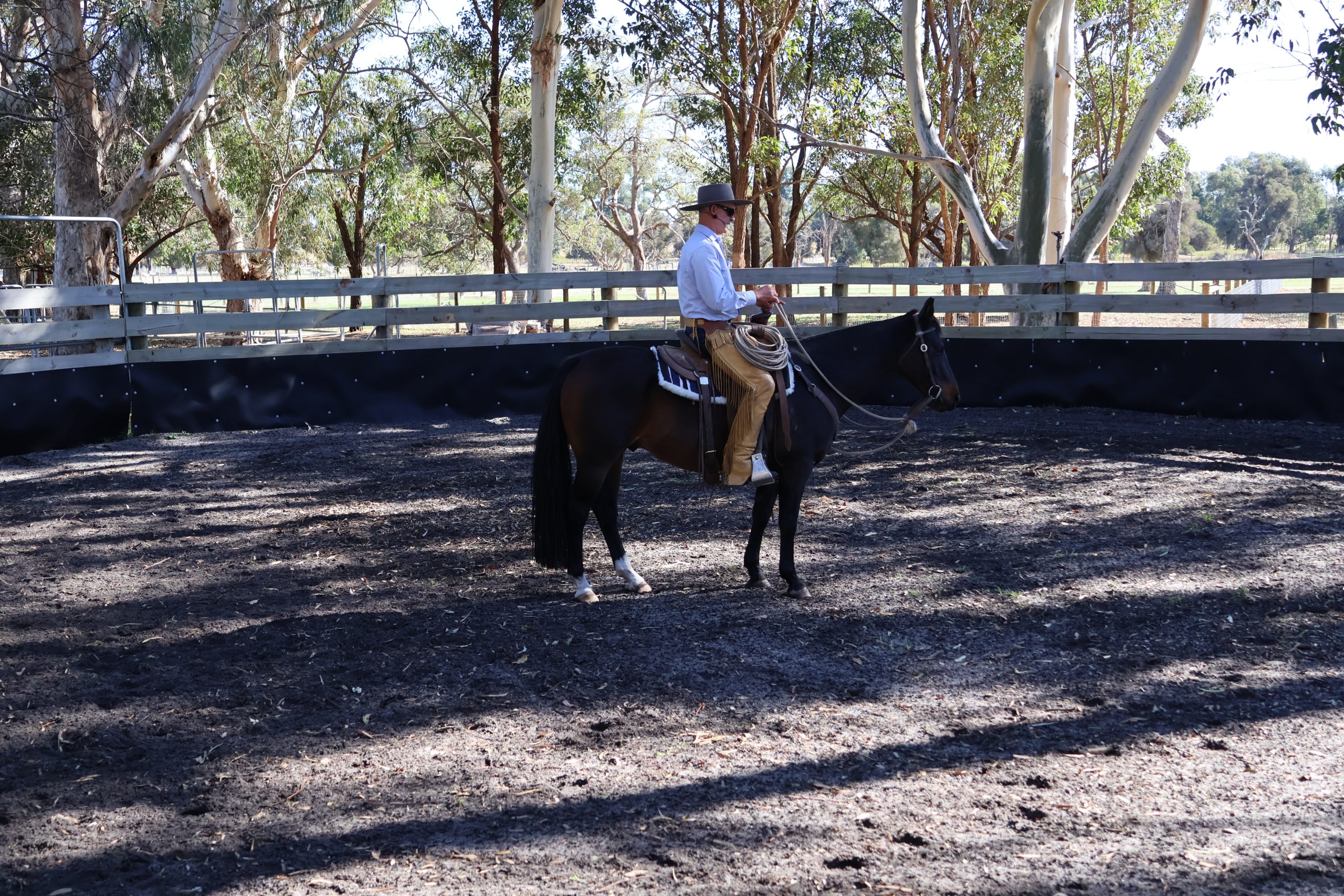


![]() It is a common occurrence where riders get their horses started and then are faced with; what do I do next. How do you progress to developing a dependable saddle horse. Green horses is not age specific as you can have a 10 year old horse that in terms of advancement is still a 3 year old. This course is for those riders with green horses and includes both a ground and ridden element to the course. It is about advancing your understanding and knowledge on both the ground and under saddle. Learning what to do if your horse gets tight under saddle when you are riding and how to better prepare your horse on the ground.
It is a common occurrence where riders get their horses started and then are faced with; what do I do next. How do you progress to developing a dependable saddle horse. Green horses is not age specific as you can have a 10 year old horse that in terms of advancement is still a 3 year old. This course is for those riders with green horses and includes both a ground and ridden element to the course. It is about advancing your understanding and knowledge on both the ground and under saddle. Learning what to do if your horse gets tight under saddle when you are riding and how to better prepare your horse on the ground.
To apply for the course, please download an application form by clicking on the button below and email the course form to; info@davidstuart.com.au
Course Application PDF Booking Enquiry![]() The year is flying by, and while there is still a bit of heat in the sun in the north of Australia, the cooler months will be here soon. A few horses are already starting to thicken up in their coats.
The year is flying by, and while there is still a bit of heat in the sun in the north of Australia, the cooler months will be here soon. A few horses are already starting to thicken up in their coats.
Whats Been Going on?
To date this year, horses have been coming and going and we have also had a home course as well. I have also just recently returned from 2 weeks at Barkly Downs, a large cattle station owned by the company: ACC. ( Australian Country Choice ). Words do not do this operation justice. This was my third year at Barkly and my role with regards to horsemanship is with staff training. The attitude of all involved, was a credit to the company and those associated. A great experience.
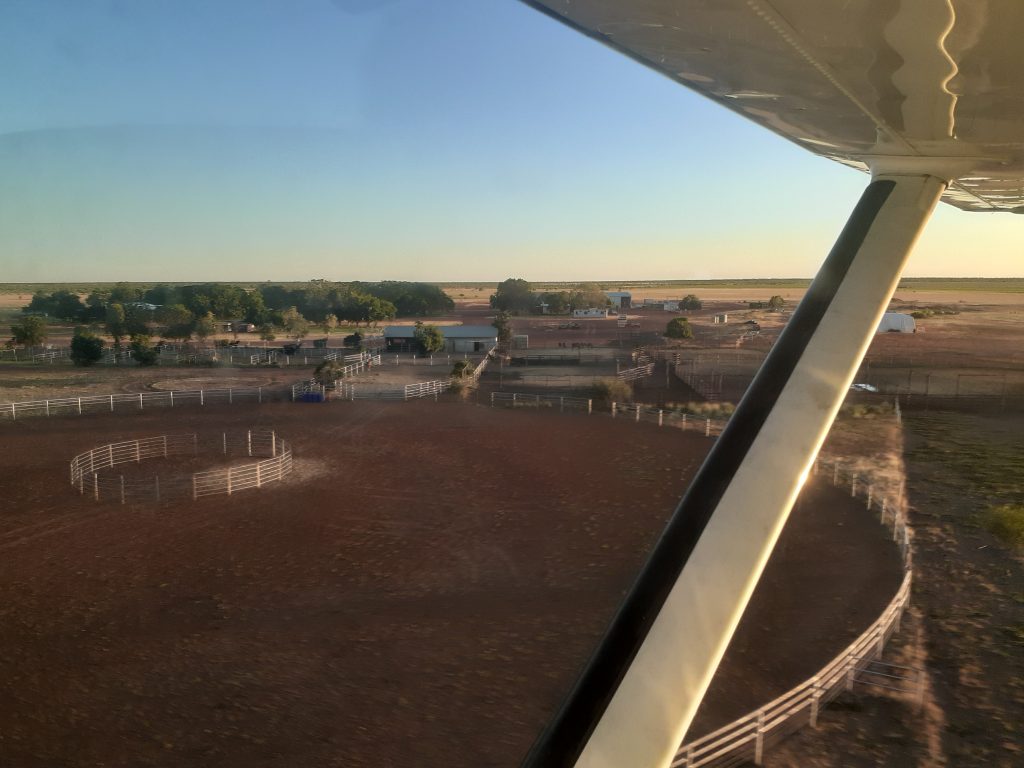
Whats coming up;
I am home now for a little bit with horses coming in and cattle work to see too. In May I am off to Western Australia, preparations for my overseas schedule for later in the year are also underway.
![]() Impulsion:
Impulsion:
Can be a conversation that does not have a start or an ending. The horse below is Rachael’s horse and he is a retired race horse. She has named him Clancy, his racing name was a bit long for us. I have ridden him a handful of times and he has a nice nature and a big engine.
In an arena environment, when you ask him to walk, trot and canter, he moves easily up through his transitions and also easily back down through his transitions. At times, off your seat aids.
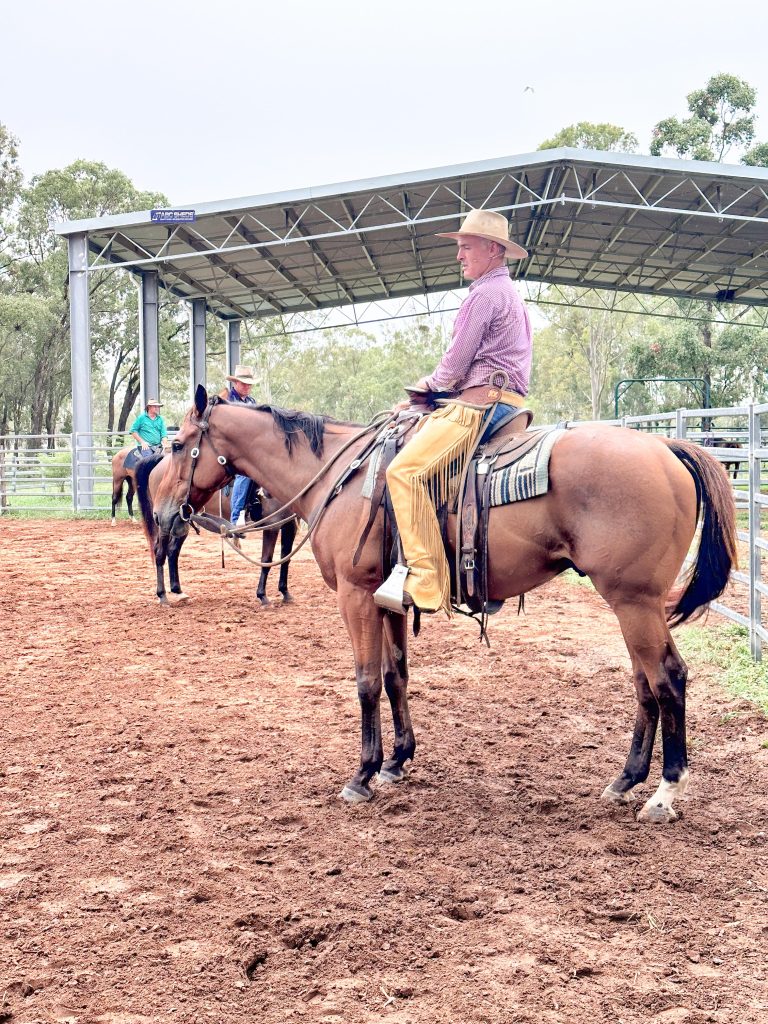
When you have the life in the horse connected to the horses feet, they become sensitive and light to your aids.
Framing themselves into a frame:
While this is not the first time this conversation has been had, as riders we perhaps need to continue to hear it time and time again to understand and appreciate the significance. Perhaps when you feel it, it gives more meaning to the words.
As your horses balance and impulsion develops, so will your horses emotional stability.
Some sage words of advice from an old friend, the amount of frame on your horse was determined by the amount of hindquarter engagement. With my friends and mentors they all placed impulsion ahead of flexion.
Hopefully the above is helpful and insightful, stay safe out there and enjoy your horses.
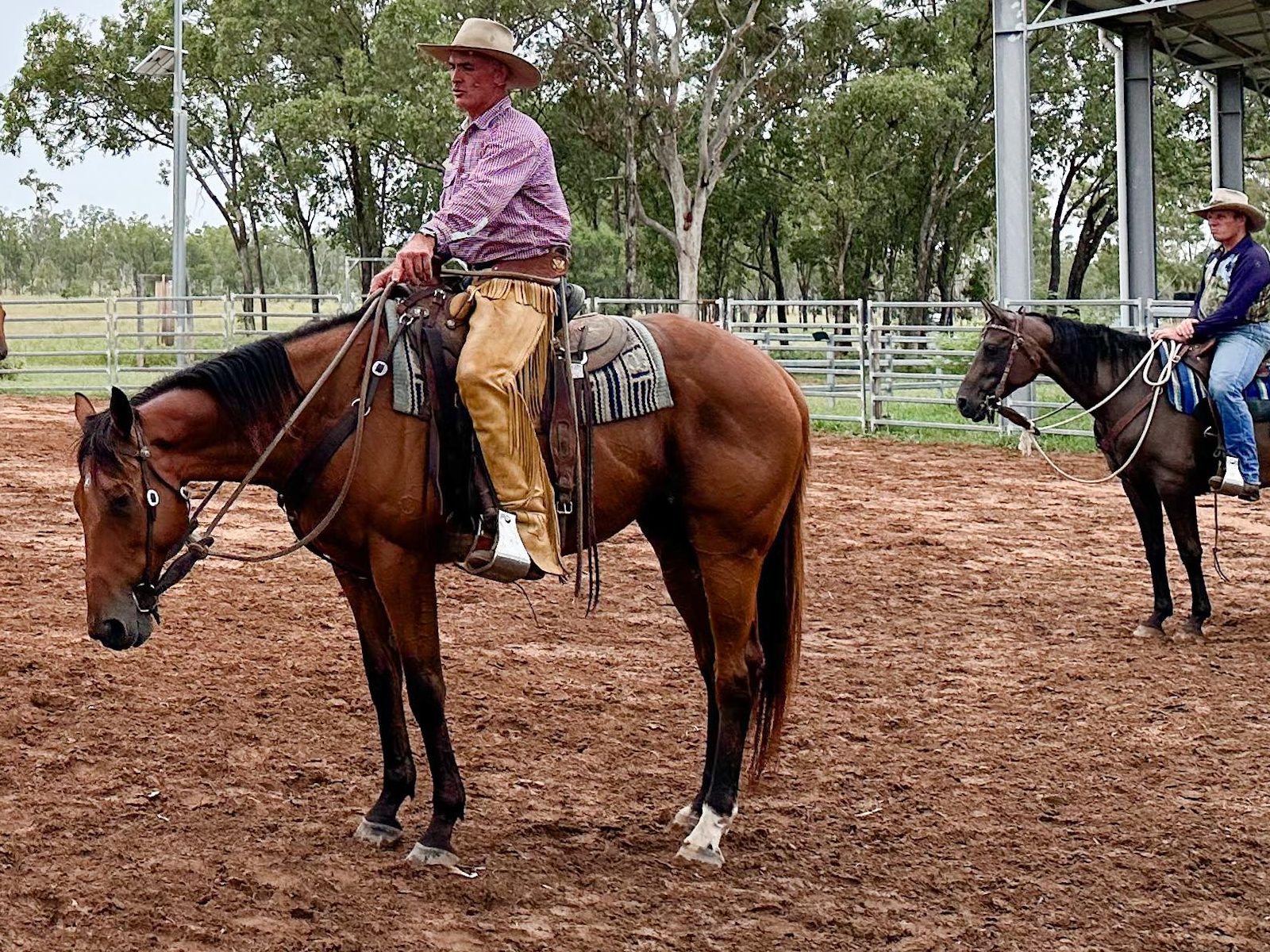
![]() The Horsemanship Clinic is about giving course participants more depth and scope to their overall horsemanship. The course aims to incorporate many elements of horsemanship, from colt starting or young horse handling to lateral work, engagement, and jumping.
The Horsemanship Clinic is about giving course participants more depth and scope to their overall horsemanship. The course aims to incorporate many elements of horsemanship, from colt starting or young horse handling to lateral work, engagement, and jumping.
This course combines both principle and purpose and is a lot of fun! The content varies from course to course and is dependent on the horses and people that turn up. Whichever path the course takes, it is always interesting, exciting and will move your horsemanship along in leaps and bounds.
Participants and their horses will learn how to develop better weight distribution and impulsion and improve their horse’s level of engagement and athleticism. Various lateral exercises are used to help with impulsion and engagement leading to the self-carriage of the horse.
You can choose to do as few or many days of the clinic.
To apply for the course, please download an application form by clicking on the button below and email the course form to; infouk@davidstuart.com.au
![]() Happy New Year to all, wishing all our followers and readers the best for the year ahead. It was nice to have a little down time during the Christmas and New Year period. We are now back into the swing of things again with outside horses and courses.
Happy New Year to all, wishing all our followers and readers the best for the year ahead. It was nice to have a little down time during the Christmas and New Year period. We are now back into the swing of things again with outside horses and courses.
The 2024 course schedule has been updated, starting with a home course in mid February. This course is starting to fill up so if you are interested or need information then please email or message. Courses are also planned for Brisbane in April and Western Australia in May, again details are on the website https://www.davidstuart.com.au/courses/ If you are unable to get to a course there is the online course option as well, available from the website.
This year we also hope to make it back to the U.K. , it has been nearly 5 years since I was there last, with covid and a few other challenges. Hopefully this year all lines out.
This coming weekend, Rachael and I are going to Charlotte Dujardin’s presentation in Caboolture, Queensland. We are both very much looking forward to this. We do however have a potential cyclone to navigate around with a few logistics involved.
I have put together a short horsemanship article below, happy reading everyone and I look forward to seeing everyone through out the year. Stay safe and healthy.
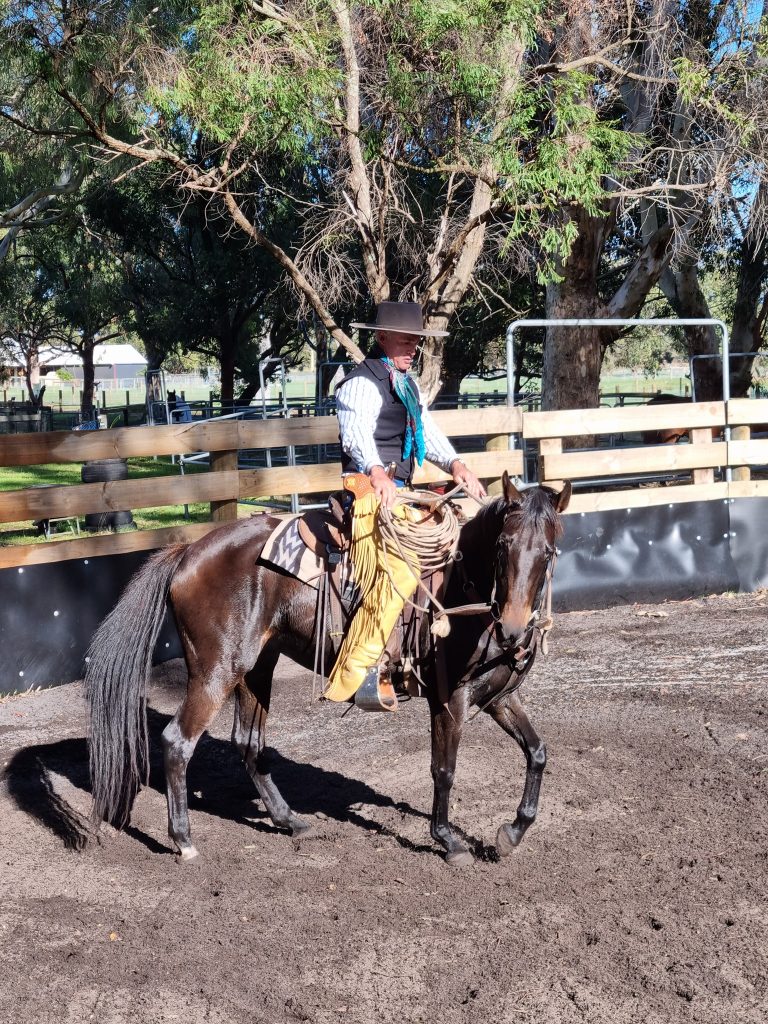
![]() What Bit To Use: When you start to speak, or talk about bits, it can be a conversation that has many different opinions and views. It is also a question that I get asked quite a bit, no pun intended, from owners when they are picking their horse up after being started. What bit do you use?
What Bit To Use: When you start to speak, or talk about bits, it can be a conversation that has many different opinions and views. It is also a question that I get asked quite a bit, no pun intended, from owners when they are picking their horse up after being started. What bit do you use?
After 4 – 5 rides, I often move to a snaffle, my preference is an eggbutt snaffle. I did ride in a ring snaffle for a long time. I like an eggbutt for riding young horses and have ridden Jeremiah Watt snaffles and saddles for a very long time.
In past blogs I have spoken a little on hands, hopefully the articles have been helpful. When riding young or green horses, I often have a little spread in my hands and a lifting action to my hands. This helps to keep the snaffle flatter in the horse’s mouth and also helps with balance. If you are using the reins for security and pulling back, the horse is probably going to end up travelling more on the forequarters and be troubled.
As you and your horse progress, you may wish to move to a hackamore etc. Some of my teachers start with the hackamore. I am of the thought process that with starting horses for the general public for a long time now, that the snaffle probably fits more situations than not. It seems to fit most horses as well, there will be situations and horses that you need to adjust for.
I trust that the above is useful to all, as mentioned above, bits can start a conversation and perhaps an education. Stay Safe and enjoy your horses.
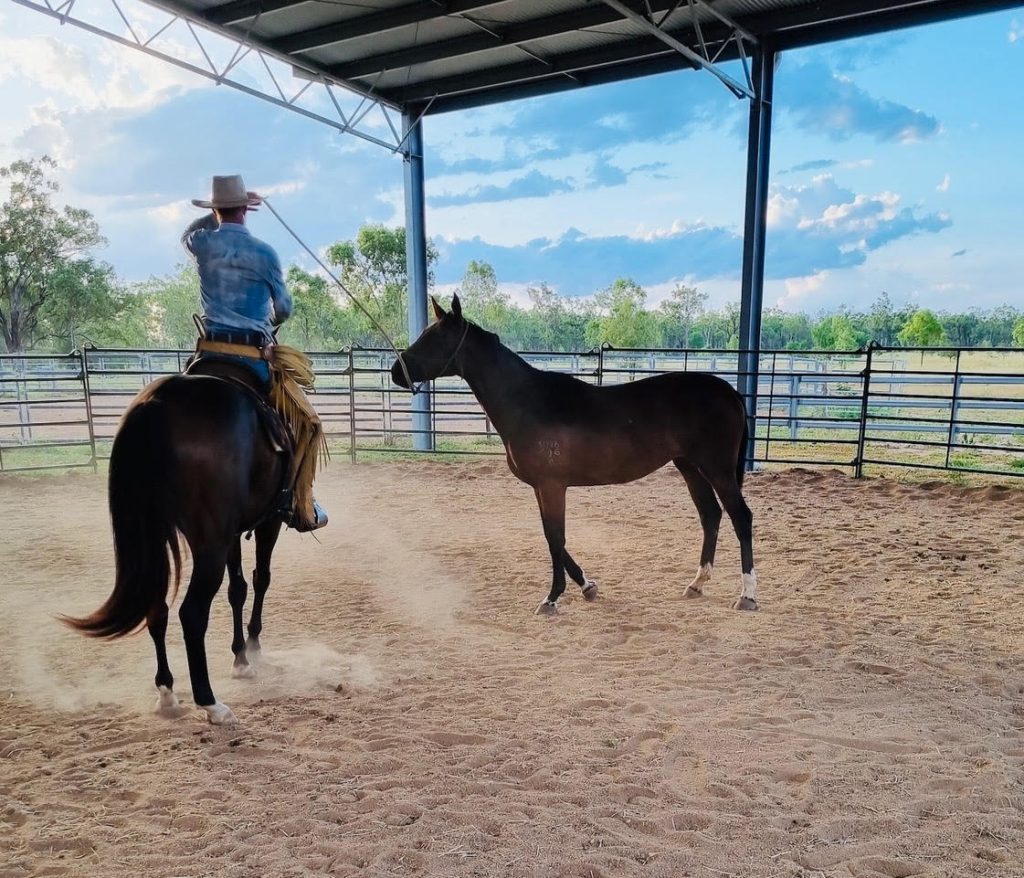
The online course – The Start; is exactly that, it is designed to get you started. There is 4 videos with 2 hours and 40 minutes of video content. The videos include ground and ridden work. In addition there is also a trailer loading, plus a saddling and bridling video. The lessons and notes associated with each of the videos I trust all will find useful.
While this course may not replace attending one with your horse. We sincerely hope that this online course provides information to all that are wishing to progress in the pursuit of developing a nice saddle horse.
While the information is applicable to young horse starting, this is not a young horse starting course.
You have unlimited access to this course for 12 months
![]() The Horsemanship Clinic is about giving course participants more depth and scope to their overall horsemanship. The course aims to incorporate many elements of horsemanship, from colt starting or young horse handling to lateral work, engagement, and jumping.
The Horsemanship Clinic is about giving course participants more depth and scope to their overall horsemanship. The course aims to incorporate many elements of horsemanship, from colt starting or young horse handling to lateral work, engagement, and jumping.
This course combines both principle and purpose and is a lot of fun! The content varies from course to course and is dependent on the horses and people that turn up. Whichever path the course takes, it is always interesting, exciting and will move your horsemanship along in leaps and bounds.
Participants and their horses will learn how to develop better weight distribution and impulsion and improve their horse’s level of engagement and athleticism. Various lateral exercises are used to help with impulsion and engagement leading to the self-carriage of the horse.
You can choose to do as few or many days of the clinic.
To apply for the course, please download an application form by clicking on the button below and email the course form to; infouk@davidstuart.com.au
![]() The Horsemanship Clinic is about giving course participants more depth and scope to their overall horsemanship. The course aims to incorporate many elements of horsemanship, from colt starting or young horse handling to lateral work, engagement, and jumping.
The Horsemanship Clinic is about giving course participants more depth and scope to their overall horsemanship. The course aims to incorporate many elements of horsemanship, from colt starting or young horse handling to lateral work, engagement, and jumping.
This course combines both principle and purpose and is a lot of fun! The content varies from course to course and is dependent on the horses and people that turn up. Whichever path the course takes, it is always interesting, exciting and will move your horsemanship along in leaps and bounds.
Participants and their horses will learn how to develop better weight distribution and impulsion and improve their horse’s level of engagement and athleticism. Various lateral exercises are used to help with impulsion and engagement leading to the self-carriage of the horse.
You can choose to do as few or many days of the clinic.
To apply for the course, please download an application form by clicking on the button below and email the course form to; infouk@davidstuart.com.au
![]() The Horsemanship Clinic is about giving course participants more depth and scope to their overall horsemanship. The course aims to incorporate many elements of horsemanship, from colt starting or young horse handling to lateral work, engagement, and jumping.
The Horsemanship Clinic is about giving course participants more depth and scope to their overall horsemanship. The course aims to incorporate many elements of horsemanship, from colt starting or young horse handling to lateral work, engagement, and jumping.
This course combines both principle and purpose and is a lot of fun! The content varies from course to course and is dependent on the horses and people that turn up. Whichever path the course takes, it is always interesting, exciting and will move your horsemanship along in leaps and bounds.
Participants and their horses will learn how to develop better weight distribution and impulsion and improve their horse’s level of engagement and athleticism. Various lateral exercises are used to help with impulsion and engagement leading to the self-carriage of the horse.
You can choose to do as few or many days of the clinic.
To apply for the course, please download an application form by clicking on the button below and email the course form to; infouk@davidstuart.com.au
This course also includes a horsemanship element to it as well. The cow working element includes the tracking of cattle and working cattle from the herd.
This course is a great example of combining principle and purpose. Cow working has a lot of the ingredients of other sports. A horse has to be able to lengthen and shorten when rating a cow, much the same as a horse would when jumping combinations, he needs to have good weight distribution and impulsion, and show athleticism –and at the same time can be a lot of fun!
To apply for a course, please download an application form by clicking on the button below. Further details on course pricing can be found on page 3 of the form.
![]() It has been a little while since my last blog, so time to rattle the keyboard again I guess. My typing is quite slow, so the keyboard does not get to rattle loudly. Since my last website blog we have been busy with horses, cattle and courses.
It has been a little while since my last blog, so time to rattle the keyboard again I guess. My typing is quite slow, so the keyboard does not get to rattle loudly. Since my last website blog we have been busy with horses, cattle and courses.
Whats Been Going On: We have had 3 home courses in the last 5 months, 2 of which were open to all and a private course for an agricultural company. Horses continue to come in for starting and foundation education. Our country and livestock, like all of us are waiting for rain.
As yet we have not got to putting next years schedule up on the website and that will probably happen in the new year. There will be home courses and away courses, so stay tuned for the schedule update.
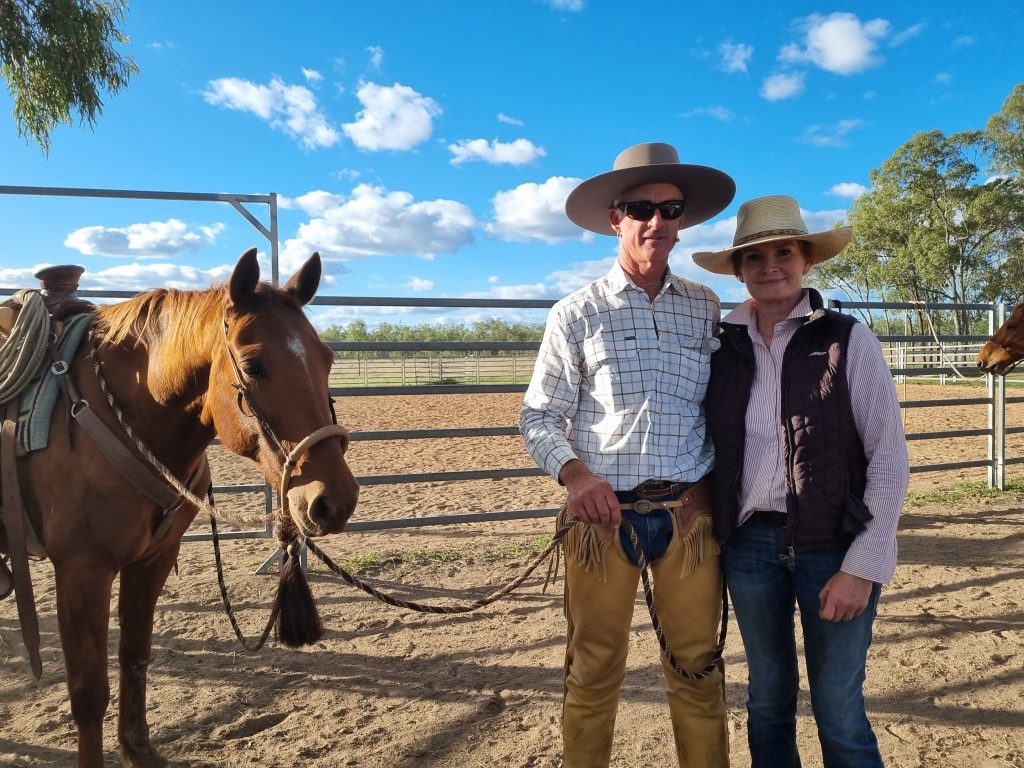
I have put together a horsemanship article below, happy reading. In case a December Blog does not happen.
Rachael and I would like to wish everyone a very Merry Christmas and a Happy New Year. Thank you all for your support over the now many. many years.
![]() When putting these articles together I try to make them of useful nature. A friend of mine told me a long time ago, David you need to read more to confirm your beliefs and understanding and to increase your knowledge and understanding.
When putting these articles together I try to make them of useful nature. A friend of mine told me a long time ago, David you need to read more to confirm your beliefs and understanding and to increase your knowledge and understanding.
I do get writers block and this is where videos perhaps say more than words. The video below is of a horse that I have started recently for a client. This filly is very intelligent and athletic and I am sure will have a successful future. She is also quite a sensitive horse and could also get to taking over as well.
Horses are very sensitive to movement and the horses eye is considerably quicker than the humans. Her sensitivity to movement is also what will make her a very athletic cow horse.
While she already shows a strong interest in cattle, with a horse that is still very green with a little over 20 rides on. I prefer to get her confident with situations like the flag and swinging a rope and riding outside. With a filly that is small and slight in build, I am also conscious of not over riding her. By keeping things slow and as she gains in strength and confidence, her ability will shine through when she does get in front of a cow.
In case readers where wondering about the baling string, it is a means of helping a horse that may be inclined to put their tongue over the bit. It will not always prevent it, just makes it a little difficult. The audio is poor with the video, but maybe the footage is helpful. My back cinch is also very loose due to not having a smaller one available.
Wishing you all a very Merry Christmas and Happy New Year.
Notifications
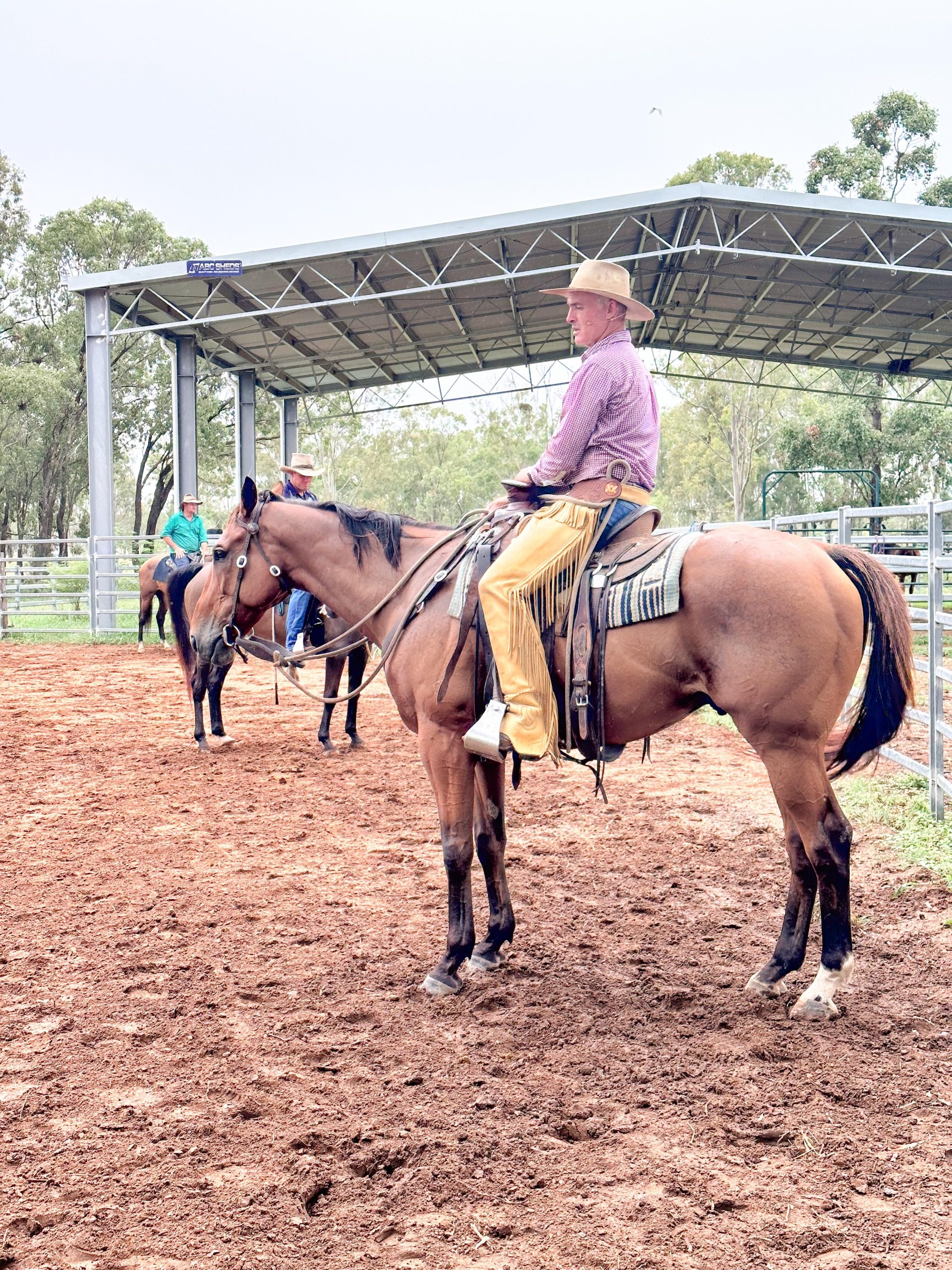
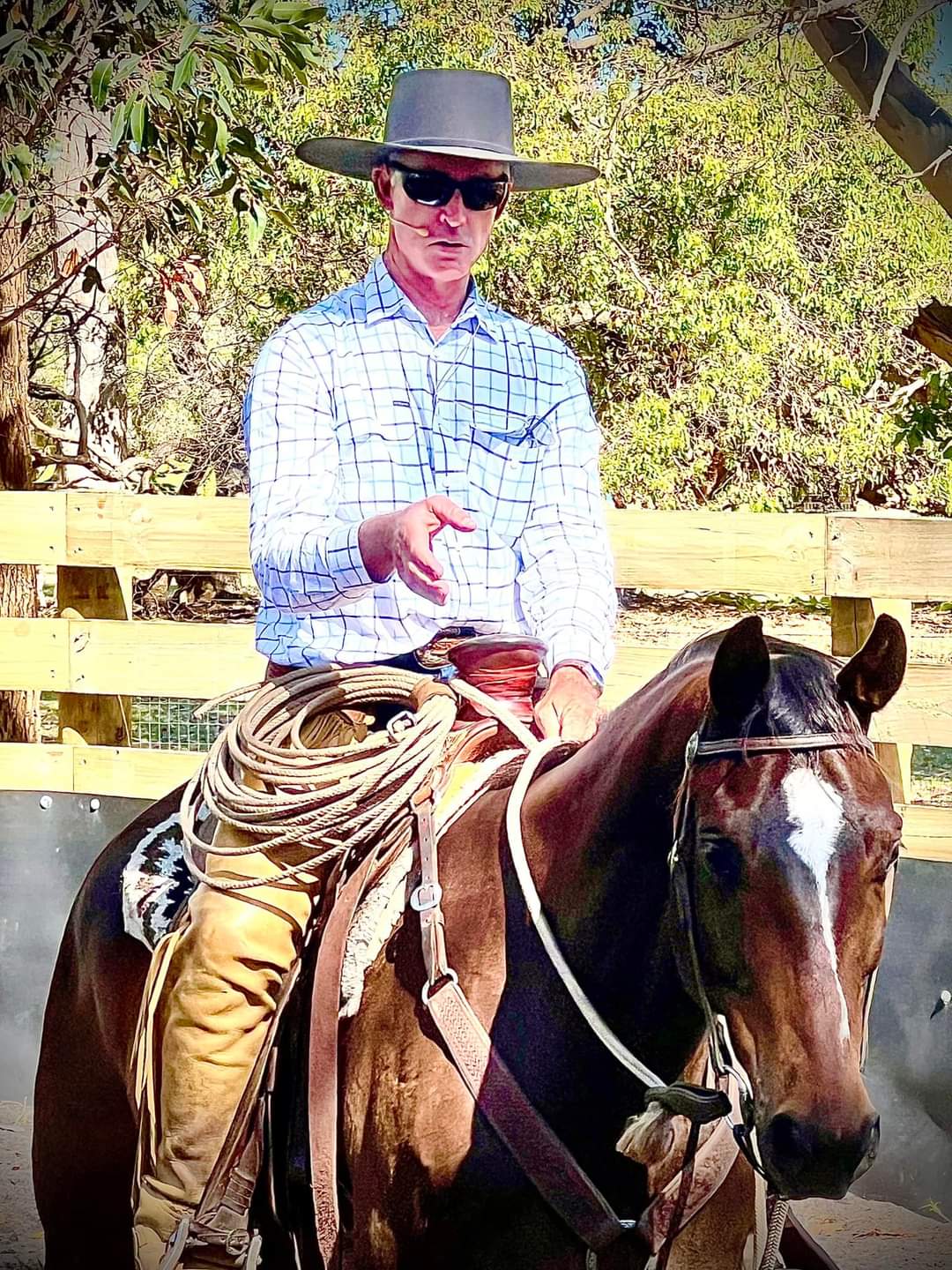


Recent Comments